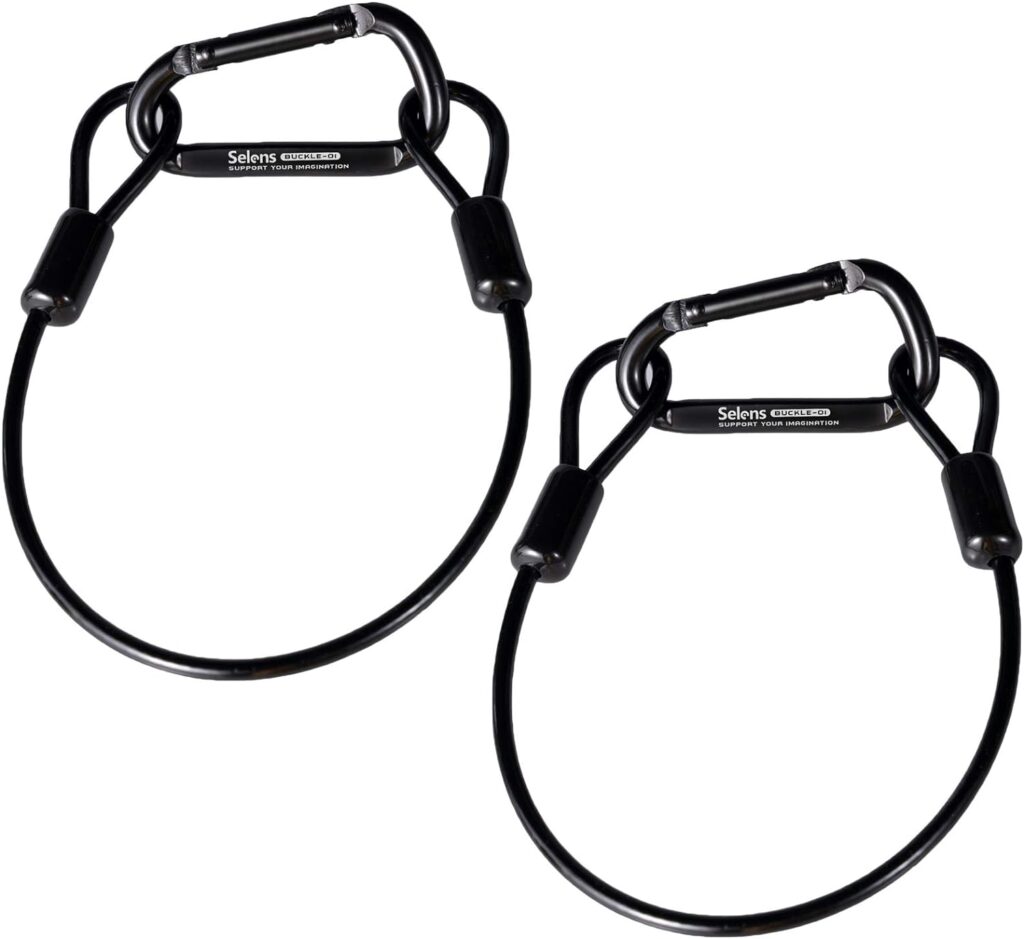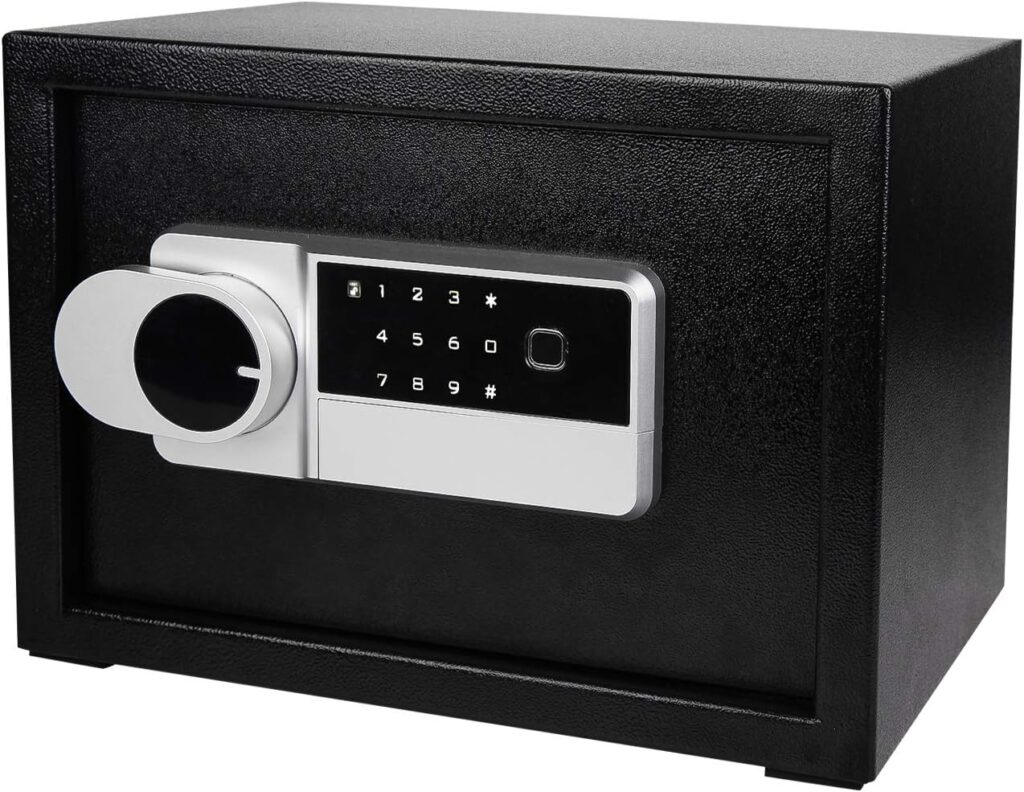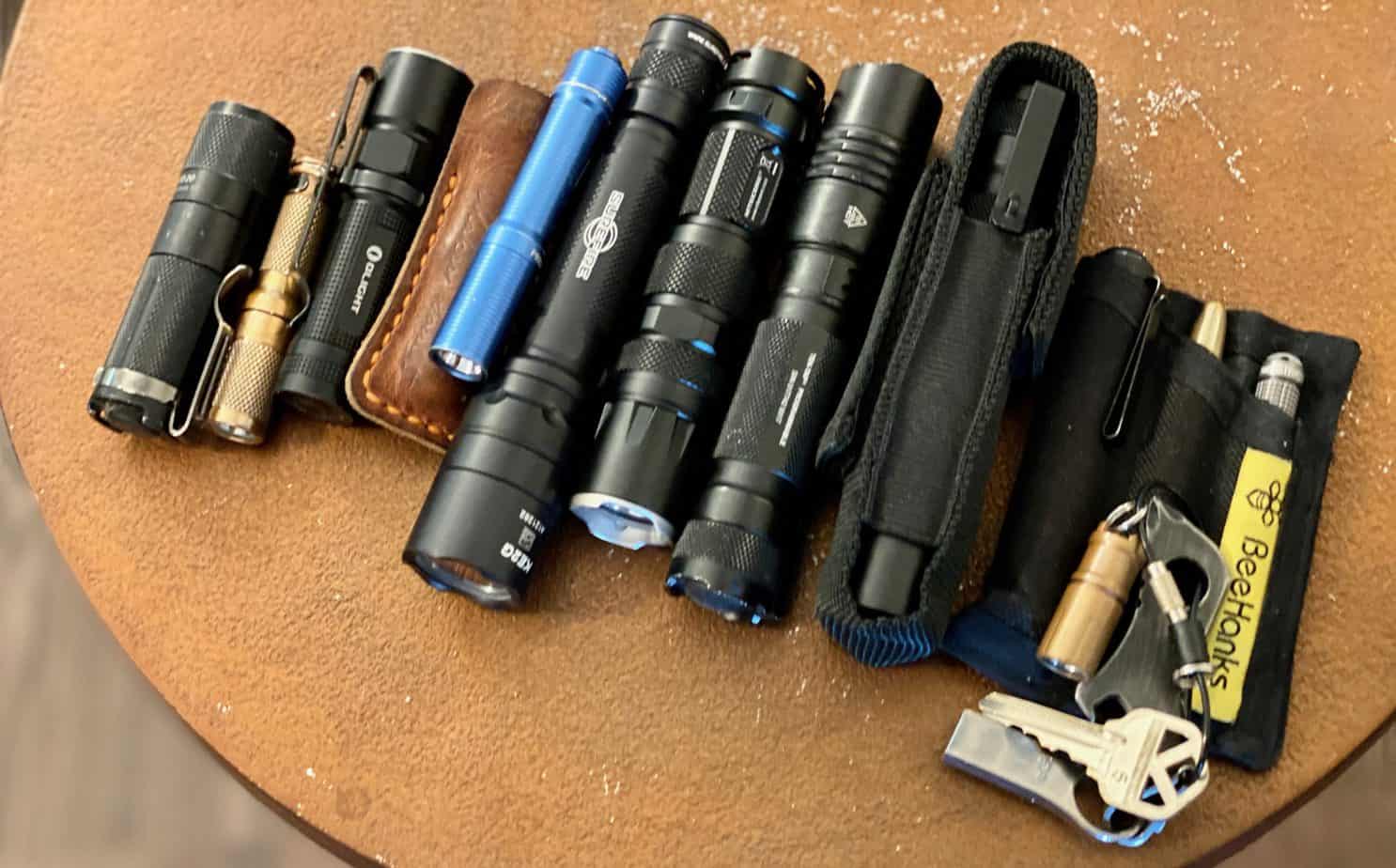How do I EDC a flashlight? As trivial as it may seem, this is something that people ask all the time. Call me a nerd (that’s okay), but I’ve carried a flashlight pretty much every single day since 2005. What started out as one of the tools I carried as part of my job in law enforcement soon transitioned into something I carry and use almost daily. The only thing that has changed are the models of lights and the methods I use to carry them.
Depending on the type of flashlight you choose to carry, you have a number of options. You should take some time to figure out the method that works best with how you intend to use your light. The type of light you carry, the size of your light, the features it contains, how concealed you want to be, and its primary function, all contribute to how you should carry. If your light serves a defensive purpose it needs to be immediately accessible. A utility light doesn’t require that level of access. There are a variety of ways to EDC a flashlight, including but not limited to:
- Deep pocket carry
- Pocket clip
- Pocket organizer
- Watch/Coin Pocket
- Keychain
- Pocket sleeve/sheath
- Belt holster (not a fan)
- Neck Carry
- Moduloader
- Off-body carry
Keep one thing in mind as you are going through the list below…I’m not saying all of these carry methods are right for you. Heck, I’m not even saying these are all “good” methods. What I am saying is that these are all techniques that I have used personally (most of them), or have witnessed other people using. It’s meant to get you thinking and to open your mind to some of the possibilities that are out there.
Considerations
One thing you need to consider when determining your method of carry is the type of light you will be using. The methods you will be able to utilize are highly dependent on the type and size of light.
Another consideration has to do with how you plan on employing your flashlight. For instance, if you plan on using a flashlight for self-defense purposes, you need to consider accessibility, how quickly you can get to it, etc.
If you will be using it in a tactical situation, maybe in conjunction with a firearm, you will want to consider which hand will be doing what. Will your weapon be in your strong hand and your light in your support hand? Probably, and if so, can you access your light if you have already drawn your weapon?
Alternately, if your light is used solely for utility purposes, speed and access is not a primary concern. Keep these types of things in mind as you work out your system.
Methods of Carry
So, let’s get into a few different methods of carry. As you work through these you will need to determine if the particular technique makes sense for your intended use and for your light. Feel free to trial and error different methods. Discard the ones you don’t like and use what you do like.
Deep Pocket Carry
Deep pocket carry is just what it sounds like, it’s simply dropping your light down into the deep, dark depths of your pocket. This can be done in either your front or back pockets but is primarily utilized with front pockets.
This method isn’t the most readily accessible technique, but it is somewhat common. It’s also regularly utilized as a method to carry certain pocket knives. The downside is that your flashlight gets mixed in with every other item you are carrying in your pocket, which slows down access.
In order to make things a little more accessible, you can utilize a paracord lanyard that basically hangs out of the top of your pocket and allows much quicker access. Some folks use a dongle, which is basically a clip that attaches to a split ring on the end of your flashlight, which then clips to the top of your pocket.
in my opinion, if you are going to utilize a dongle or a clip you might as well carry a flashlight with a clip integrated into its design. However, using a flashlight with a clip often exposes the top of the light, while a pocket dongle allow the flashlight to ride deeper into the pocket.
Pocket Clip





Next would be the pocket clip. This is the technique that I personally utilize the most often. I first began using a pocket clip flashlight in a law enforcement capacity when I would be working in plain clothes.
So, for 15 years or more, I have stuck with using flashlights with pocket clips the majority of the time. Keep in mind, this is relative to what I carry on my body, not what I am carrying via other means.
Remember, not all flashlights with clips carry the same. Some have deep pocket clips and ride flush, or lower in the pocket, and some protrude above the top of the pocket line to some degree.
I personally do not care for flashlights that protrude above the top hem of the pocket when they are clipped in. While it does add additional surface area to grab when you are deploying your light, I don’t like how I obvious it is to a casual observer.
Pocket Organizer



Another option to consider is a pocket organizer. These are typically small, flat, “organizers” that allow the carry of small EDC items. For instance, in the organizer above, I’m able to carry a small Streamlight Microstream flashlight, a Fisher Space Pen Bullet Pen, and an EXOTAC nanoSTRIKER.
The nice thing about these organizers is it allows your gear to lay flat in your pocket without bunching up at the bottom. It’s nice for keeping several small EDC ready for use. Simply pull out the organizer, select what you need to use, and throw the rest back into your pocket. These can easily be carried in a front or rear pocket.
Watch/Coin Pocket

Your pocket watch or coin pocket is another solid option for smaller lights such as AAA or some AA. This one is pretty Straightforward, simply slip the light into your coin pocket or clip it in there, whichever you prefer. There are going to be some pants that won’t accommodate this method due to shallow pocket size, but there are a lot that will allow this method.
Keychain

Another method really popular for small utility style lights is the keychain method. A lot of lights that are conducive to this kind of carry already have it an attachment with a split ring built into their design.
This allows a flashlight like the MARATAC Peanut to be clipped onto your keychain and practically disappear. It is small, rechargeable, and very unobtrusive. I like to carry a light like this on my keychain for utility purposes and for those times when using a light on a cell phone is not practical. I prefer to avoid lights on cell phones as much as possible in order to save the battery for more critical uses.
Pocket Sleeve/Sheath


If you want to pocket carry, but are concerned about your light damaging or marking up your phone or any other item, you can always use a sleeve or sheath. I prefer to use a leather sleeve by Makers South.
This is a small, well-made, leather sleeve that perfectly holds my small AAA flashlights, like the MARATAC AAA. Again, a sleeve like this will protect other items in your pocket as well as provide a way to smooth out its profile if it is printing in your pocket. Not that it is a big deal, but some folks are sensitive to that.
Belt Holster/Pouch

You can always use a dedicated pouch, multitool pouch, or anything similar to carry your light on your belt line. Some folks use this method and it works perfectly fine for them. However, for me, it just doesn’t work.
I like to keep the exterior of my belt line as clean as possible to avoid drawing attention to those areas. If there is anything on my belt line it is typically inside my waistband in order to aid in concealment.
After carrying a variety of tools on my belt line for many years, I kind of enjoy not having to buy oversized clothing to help conceal. With that being said, it is a functional method that allows for quick access to your tool.
Neck Carry
I have never tried this method, but there are people that use a breakaway ball chain around the neck to carry small flashlights. I’m typically not the biggest fan of even carrying a neck knife, because I don’t like the weight of the item around my neck. The same rings true for a flashlight as well. Again, depending on what you’re doing, this can be a viable option if you need a light accessible in a more centerline position.
Moduloader
A moduloader, like the Raven Concealment Systems Pocket Shield, Is a popular option among the folks who utilize it. Think of it as a pocket organizer on steroids.
It’s basically a modular platform allowing you to carry a variety of EDC items in your pocket without printing. You can easily carry a flashlight utilizing this piece of kit, but it also works well for other defensive items and small tools.
The pocket Shield works really well in terms of ease of use when paired with items that have factory pocket clips. You can simply clip a tool like your flashlight into the cutouts on the platform and it will hold it in an upright position.
It’s a solid option for those who want a more discreet method of carry.
Off-body Carry
Off body carry utilizing items such as backpacks, briefcase, EDC organizers, etc., it’s pretty much a no-brainer. With some exceptions, you can carry whatever flashlight you want using any of these methods without any issues problem.
The only downside is accessibility during times when you may need it in a pinch. Outside of that, it’s a solid solution to carry the tool of your choice in an unobtrusive manner.
Conclusion
Let’s be honest, carrying a flashlight on a daily basis is not rocket science. However, if you do it in a manner that is uncomfortable or does not lend itself to using the tool your carrying, you’re going to find yourself leaving your light at home.
The idea is to find a method that works for you as it relates to how you plan on applying your light in the real world. It won’t do you any good if you don’t have it when you need it.
I’m not just talking about self-defense type situations, but for life’s other small inconveniences as well. Life is just easier when you’re prepared.
Give some of these methods a shot and let me know what you prefer and why.

